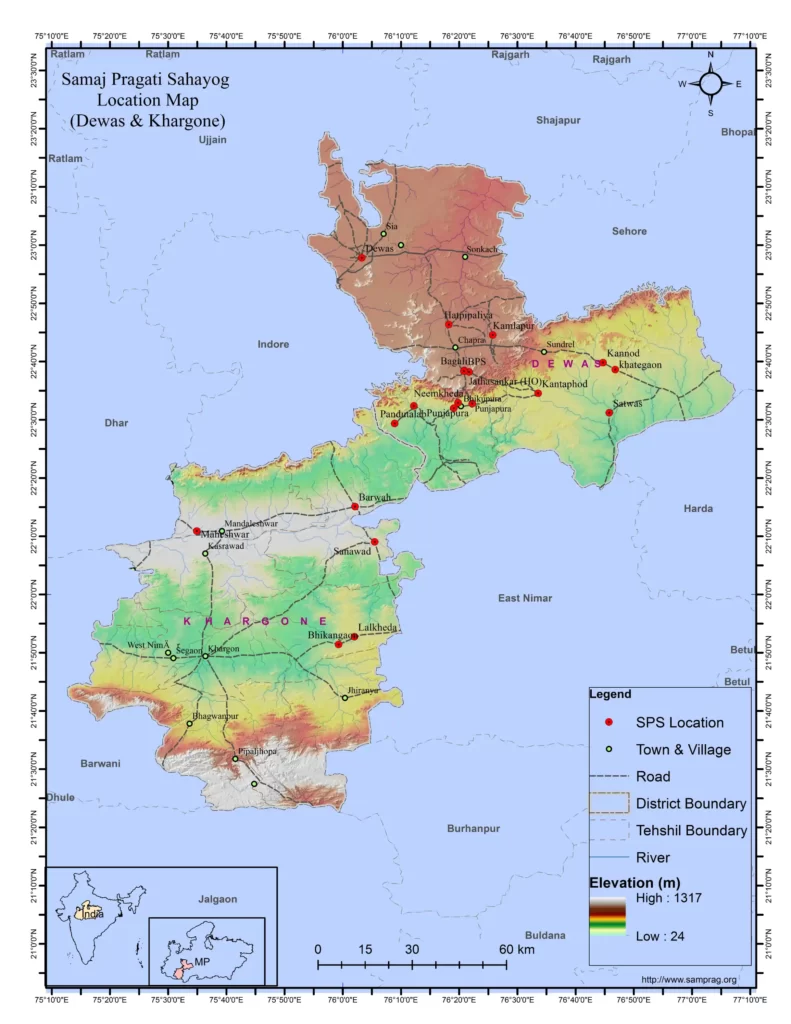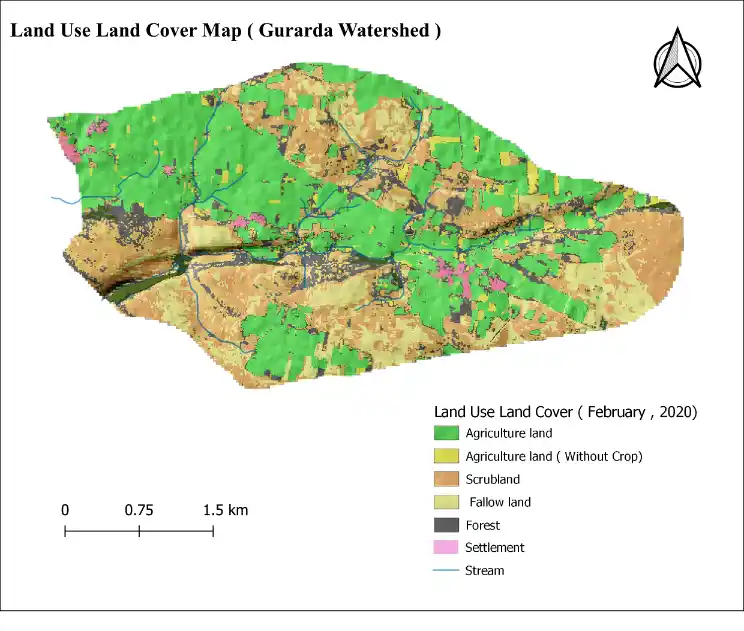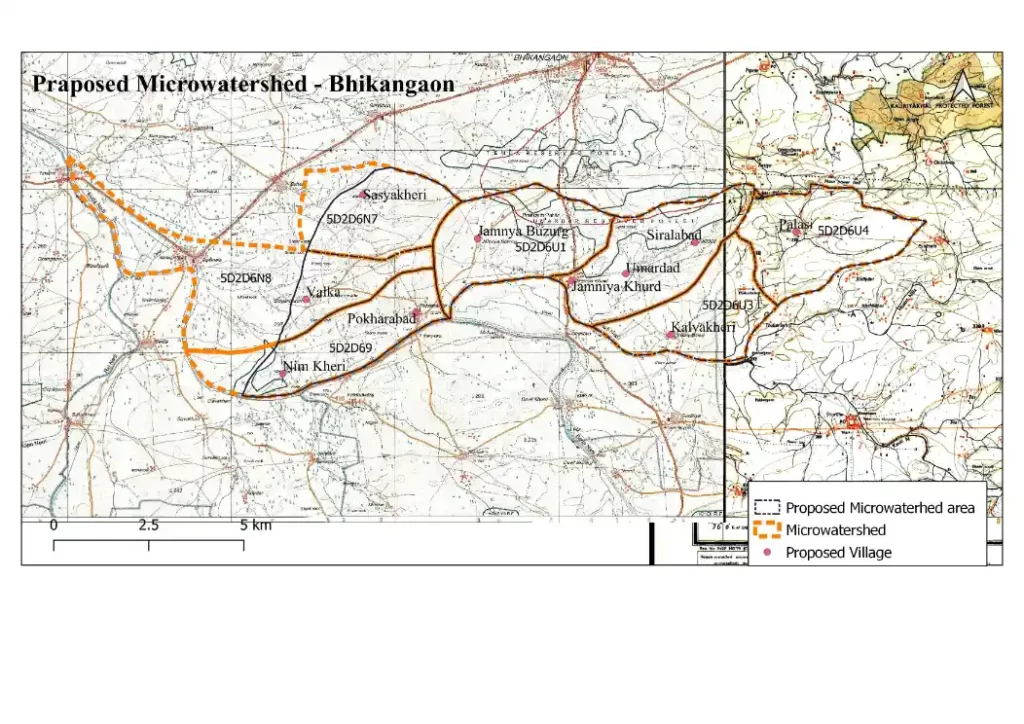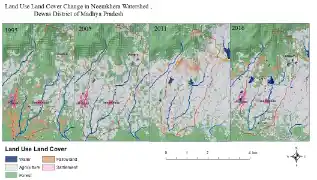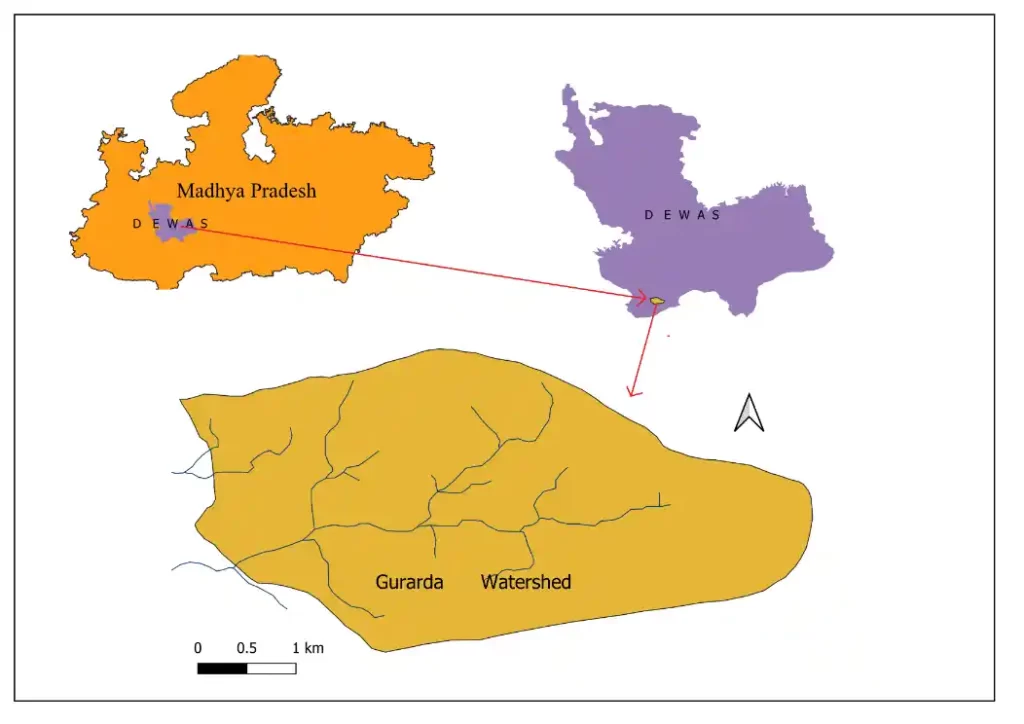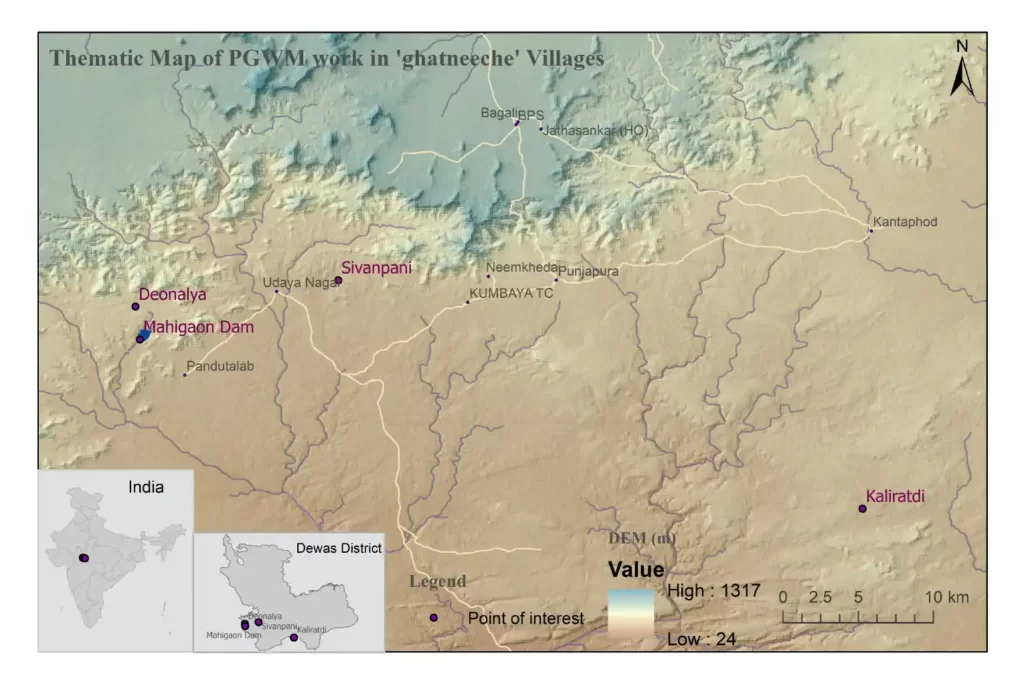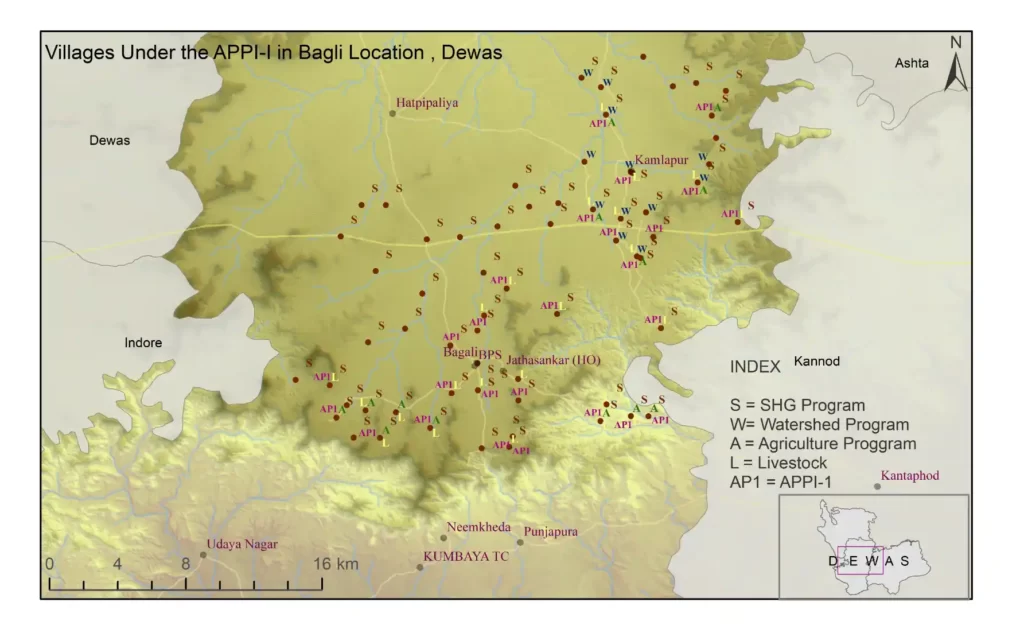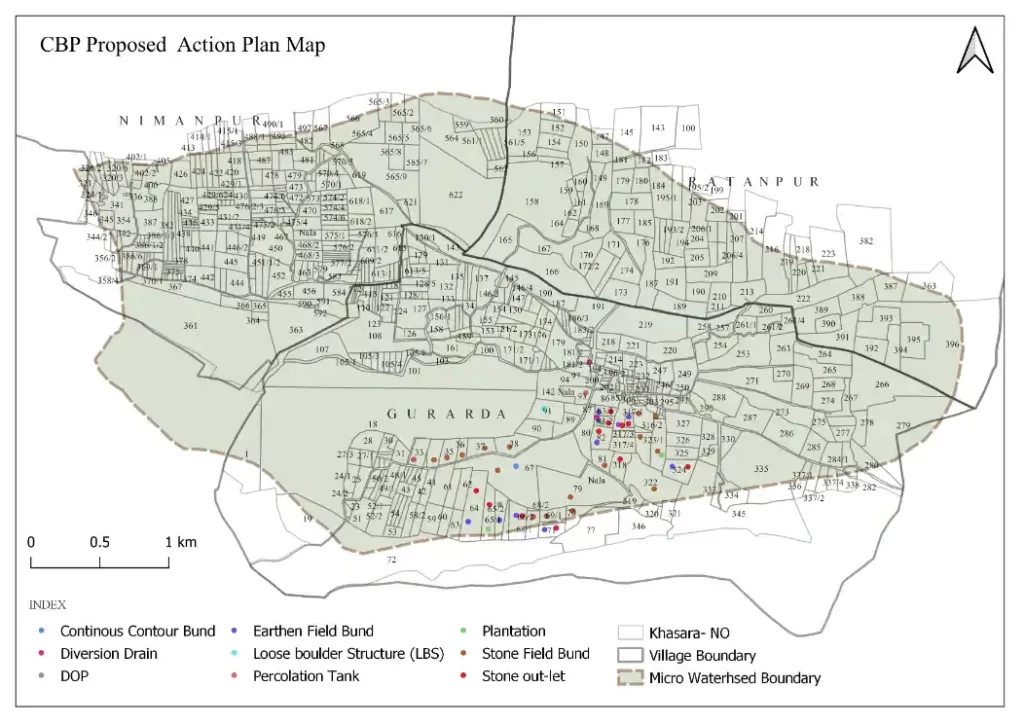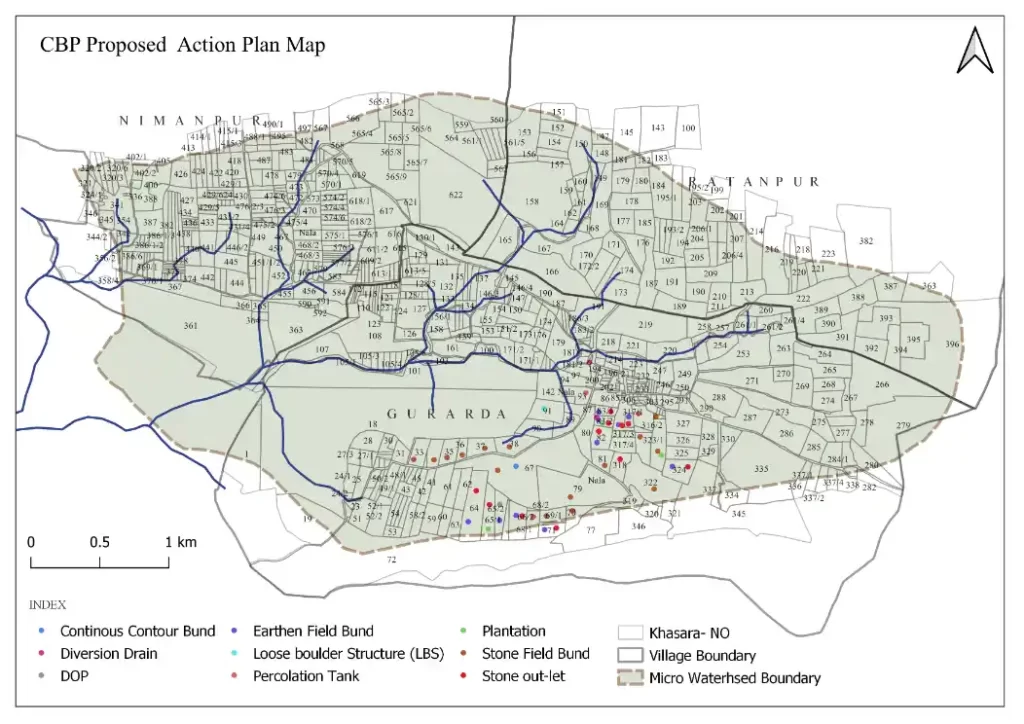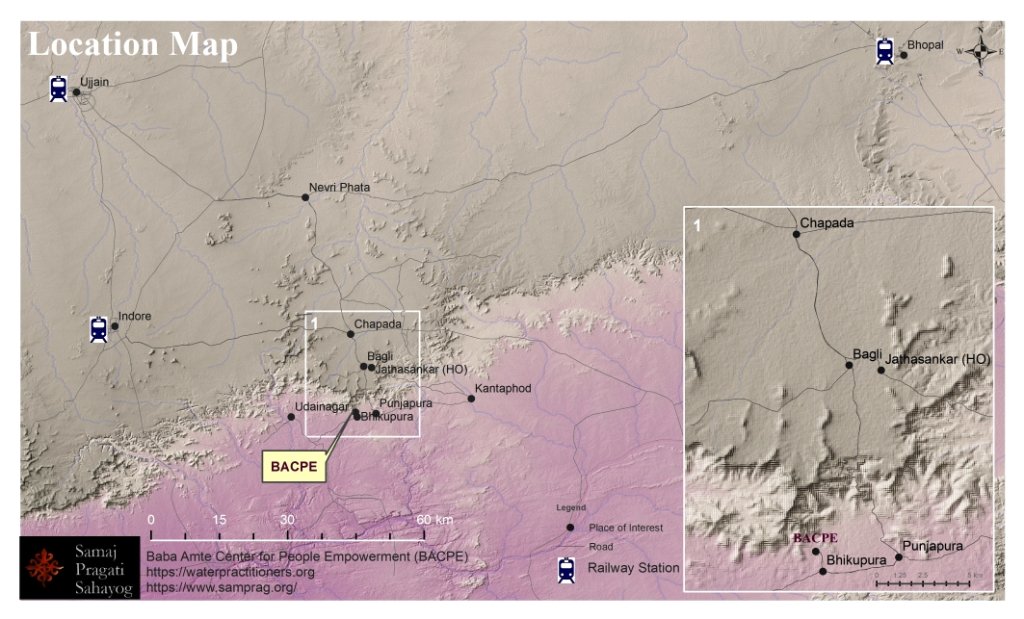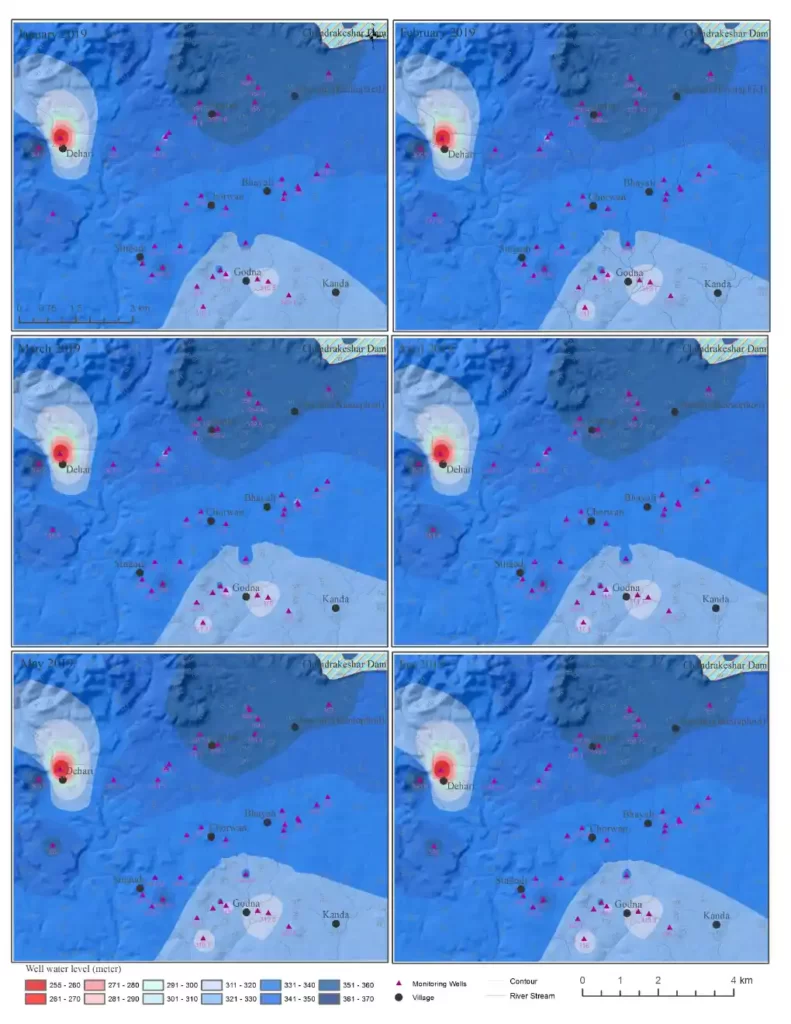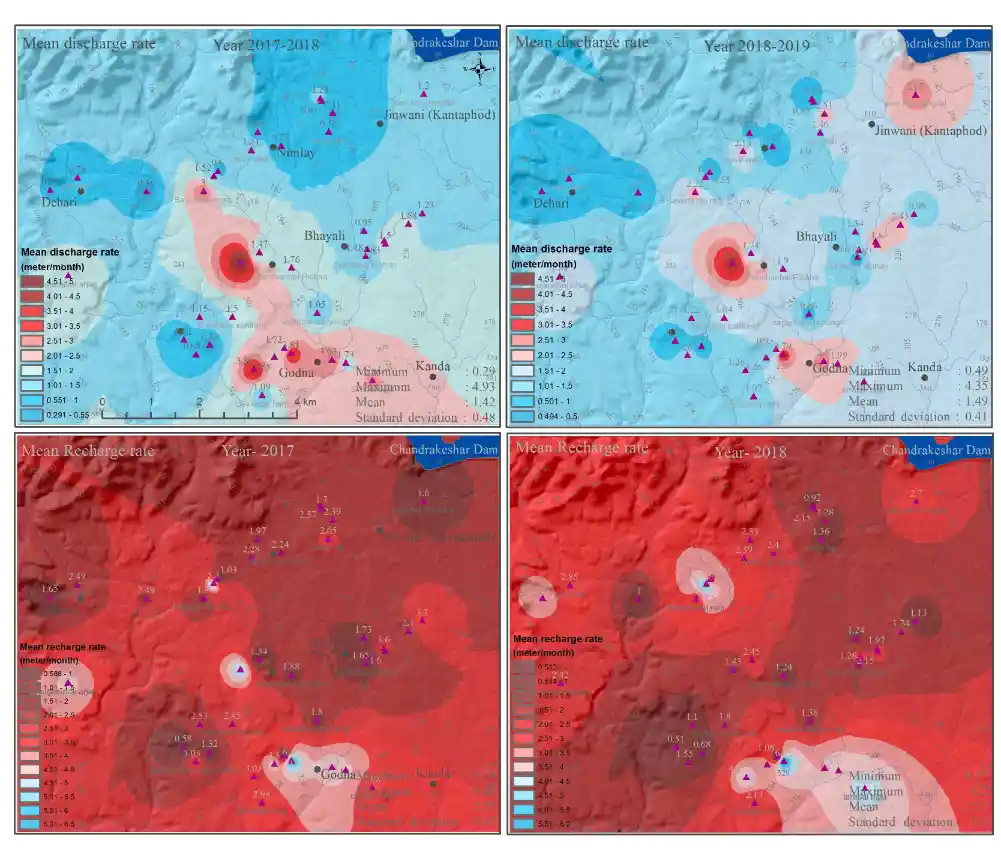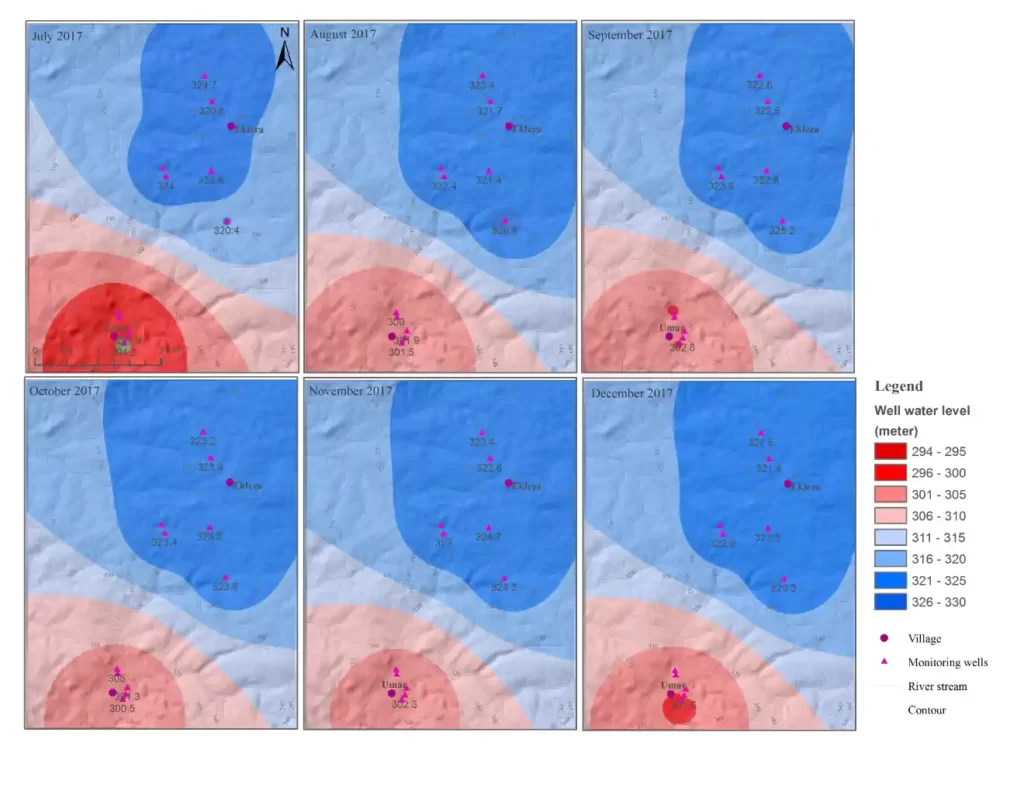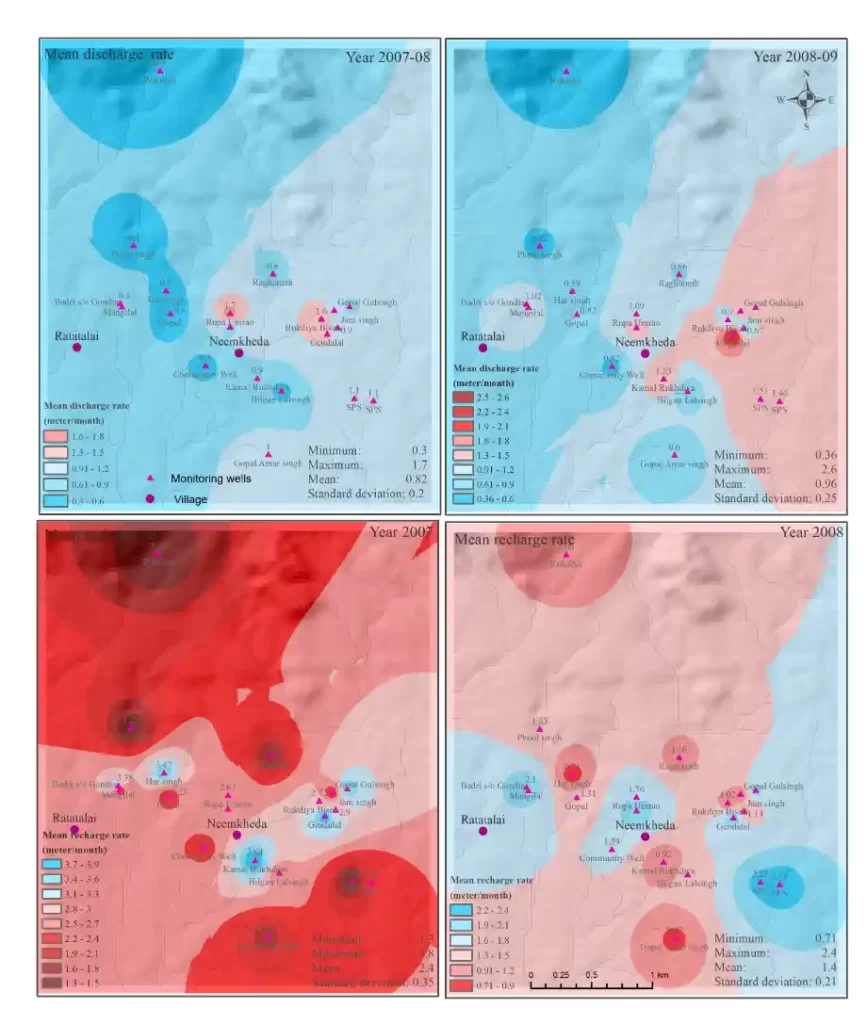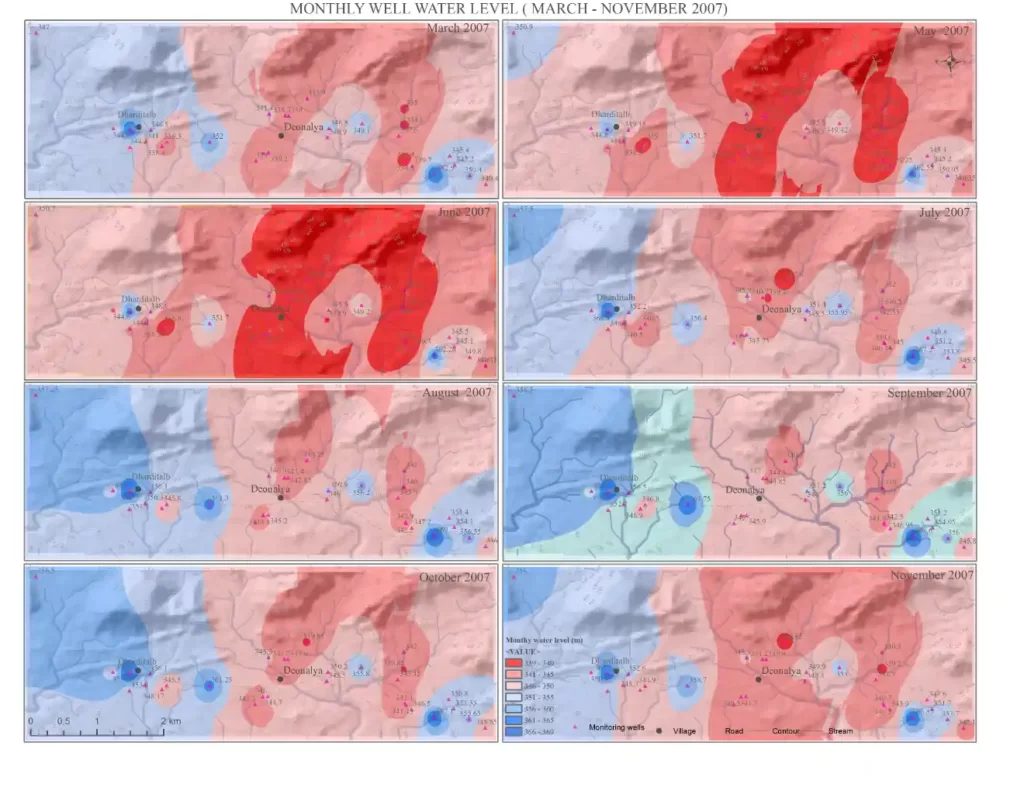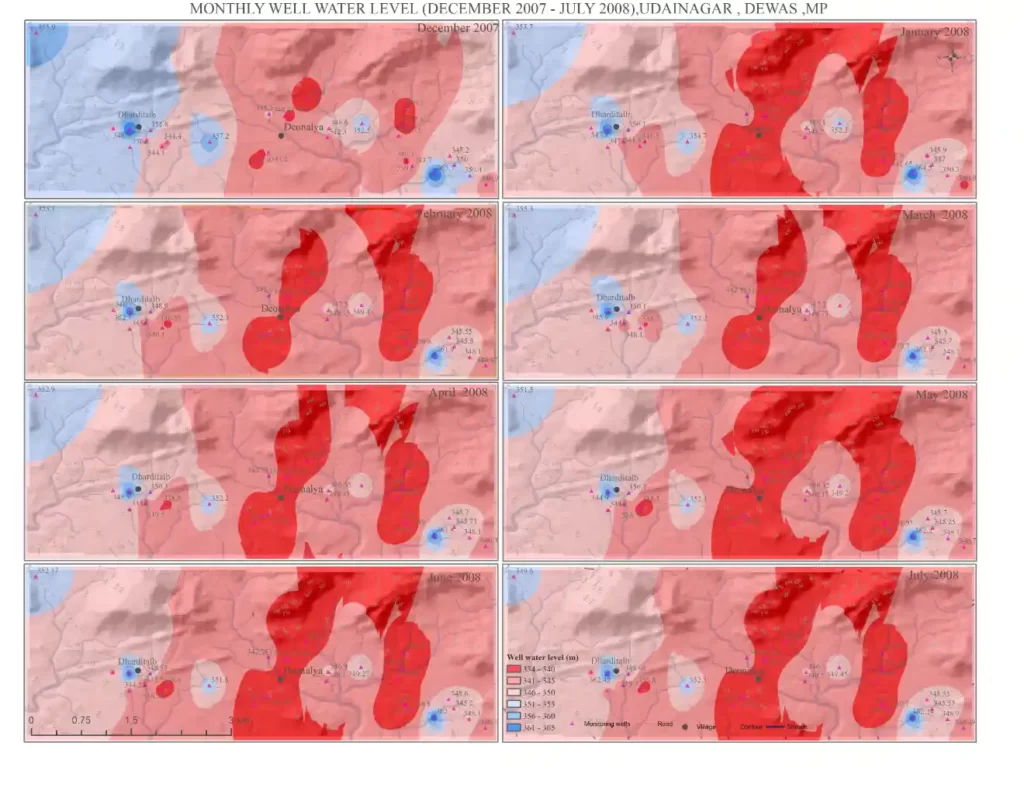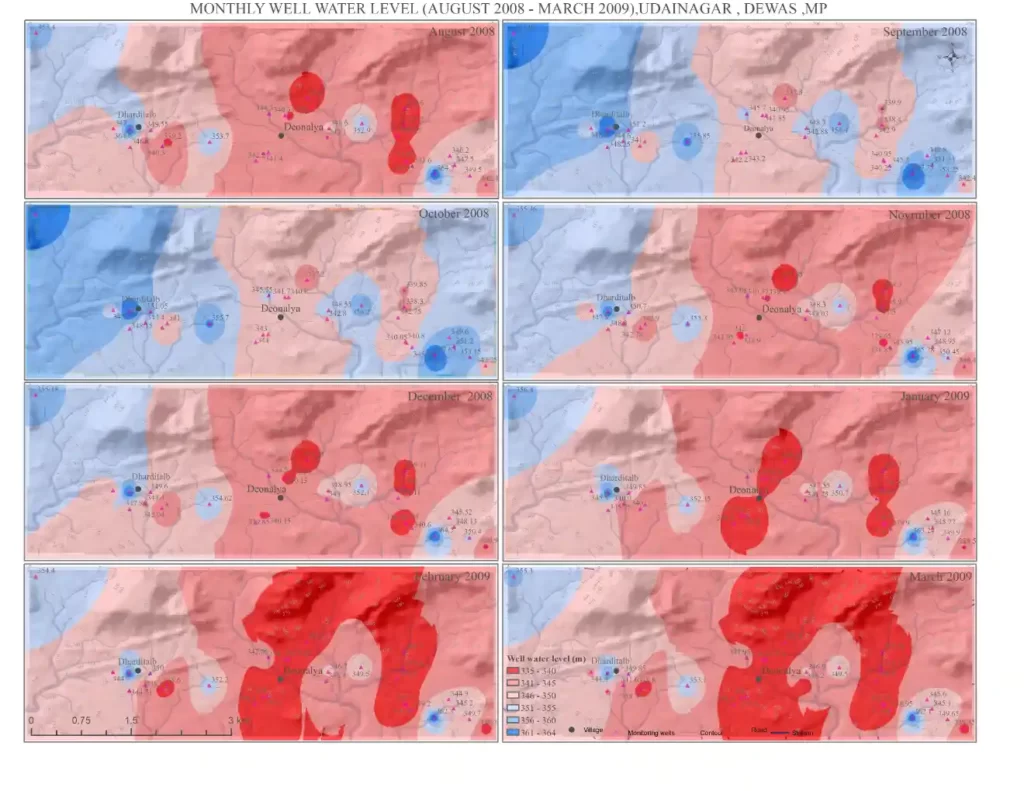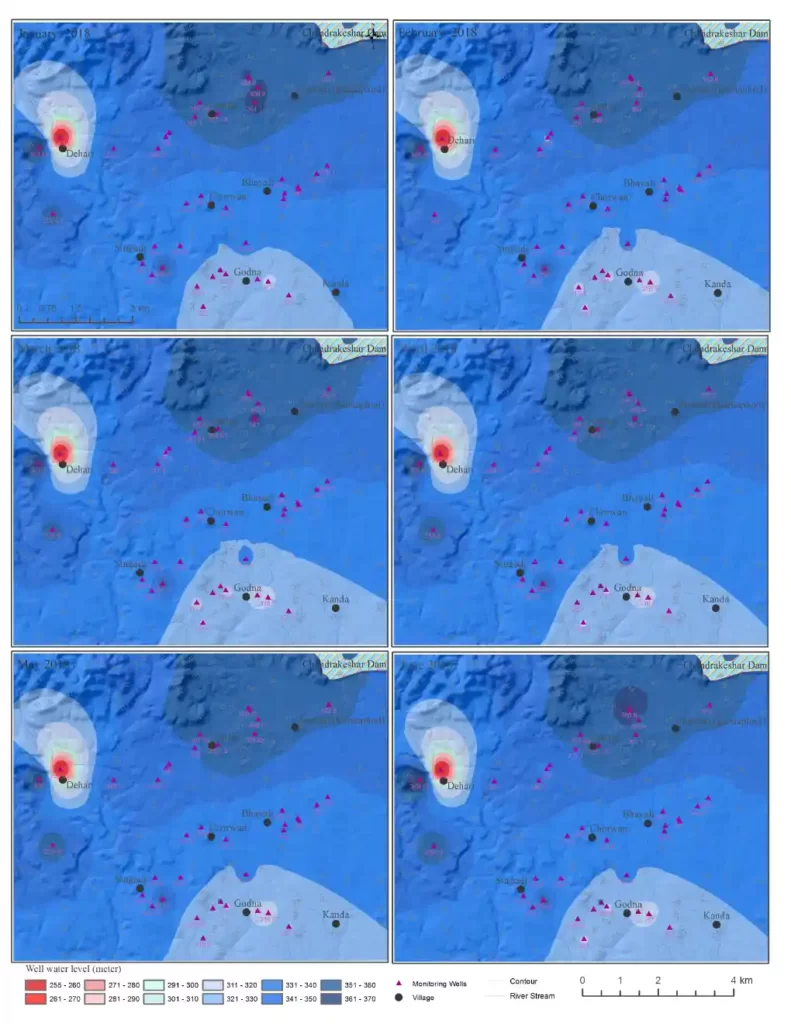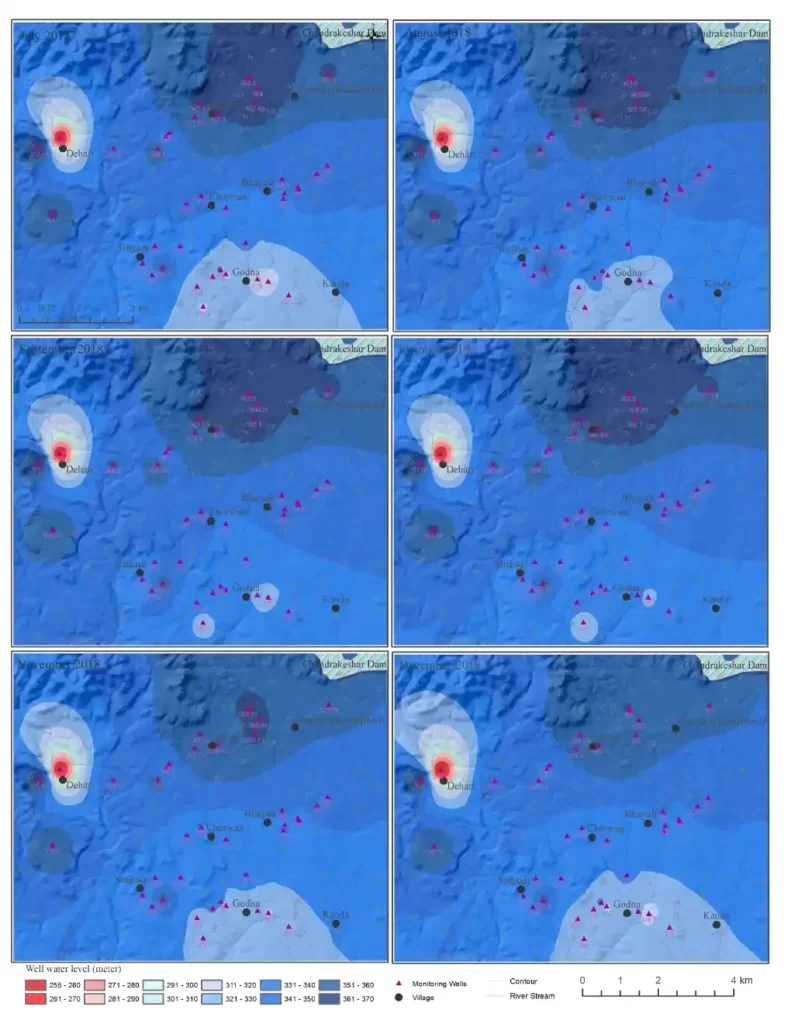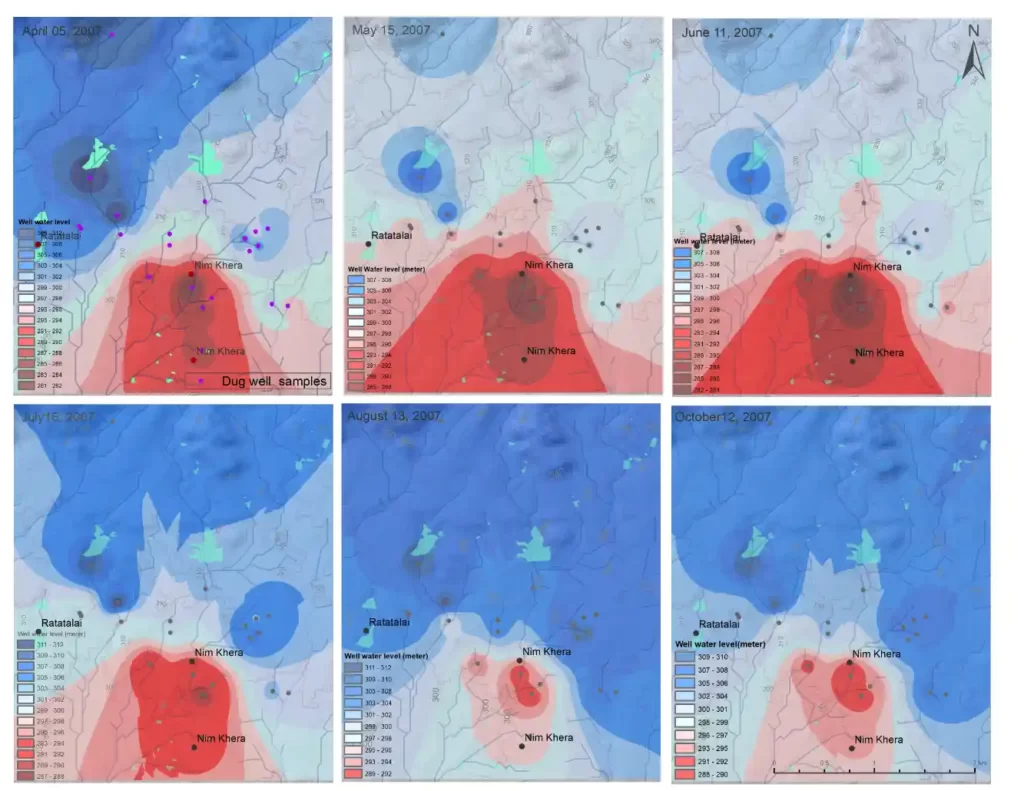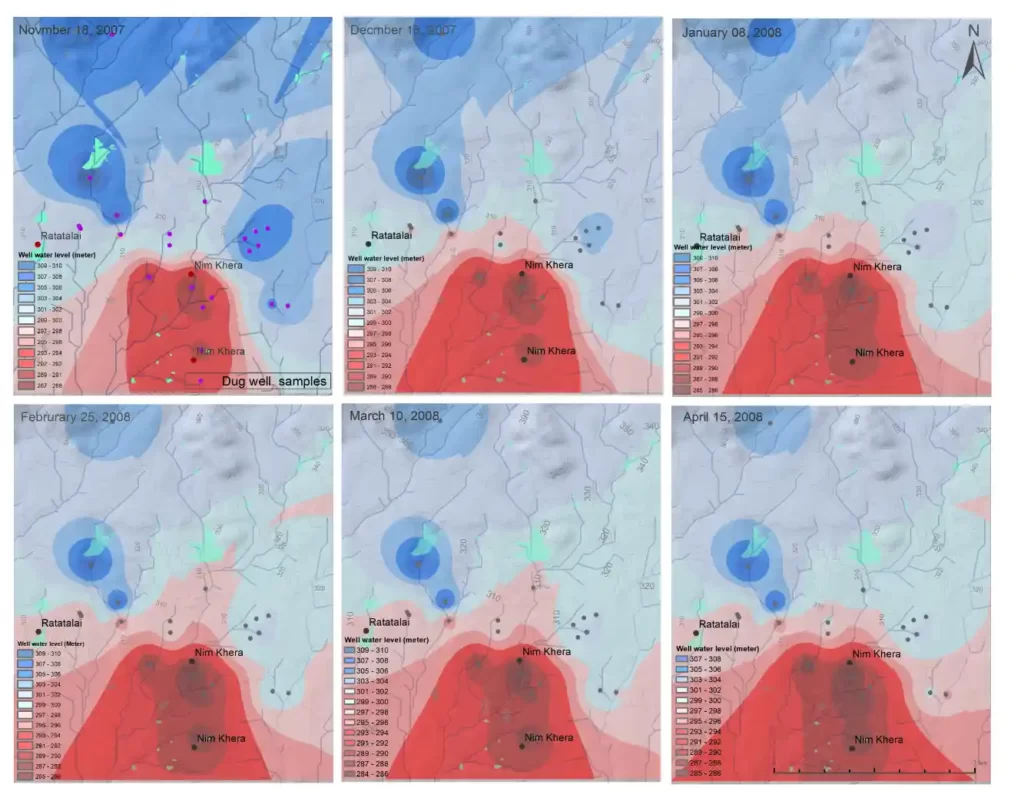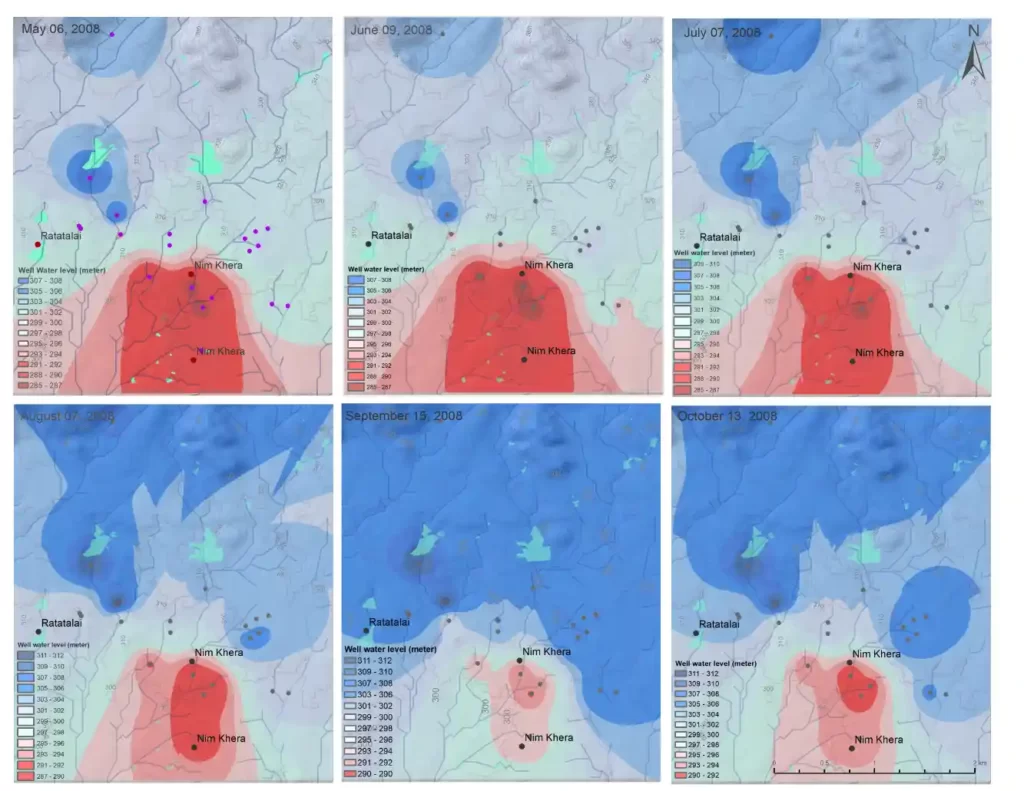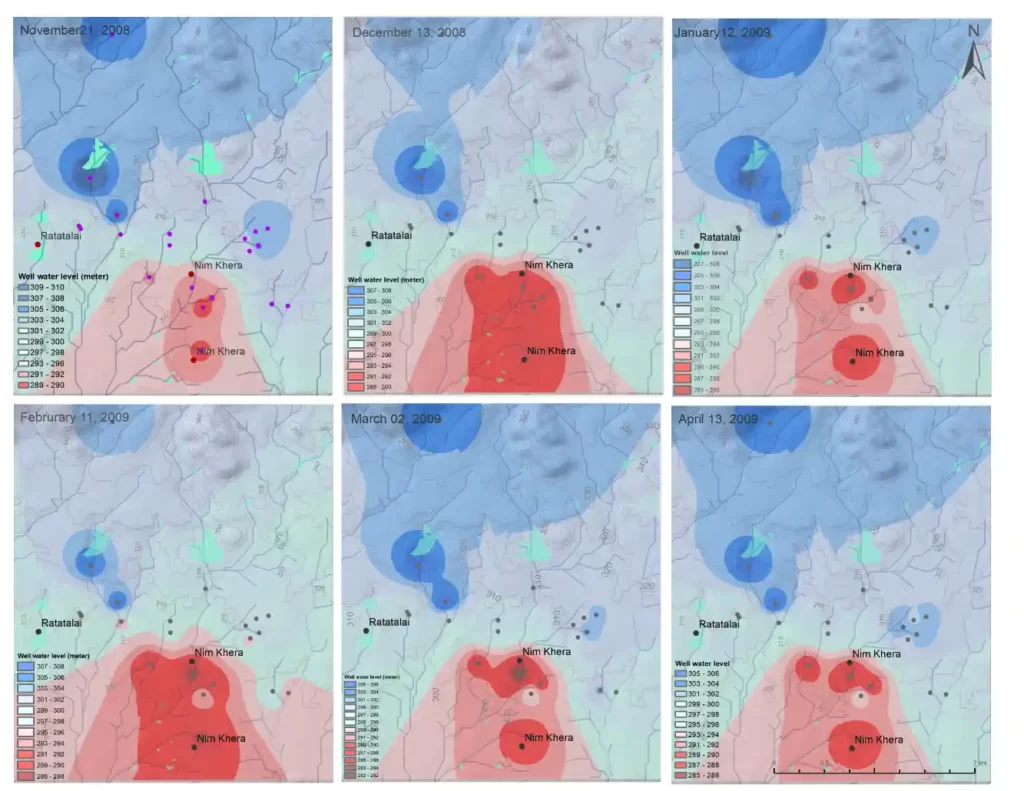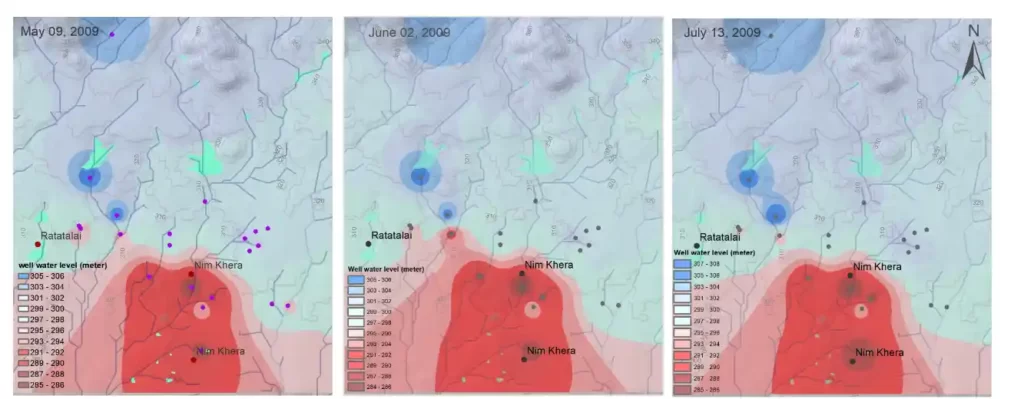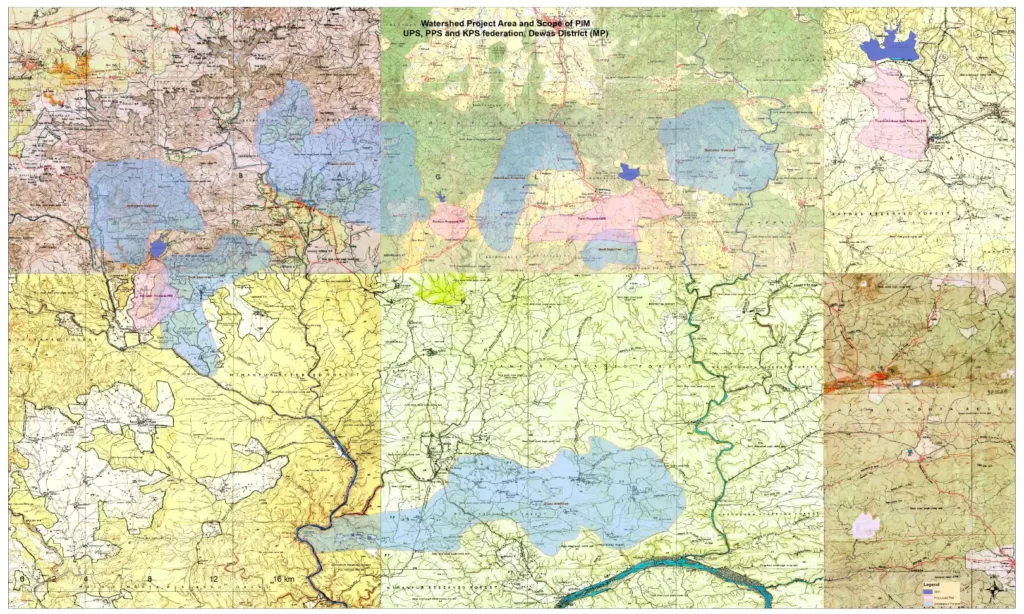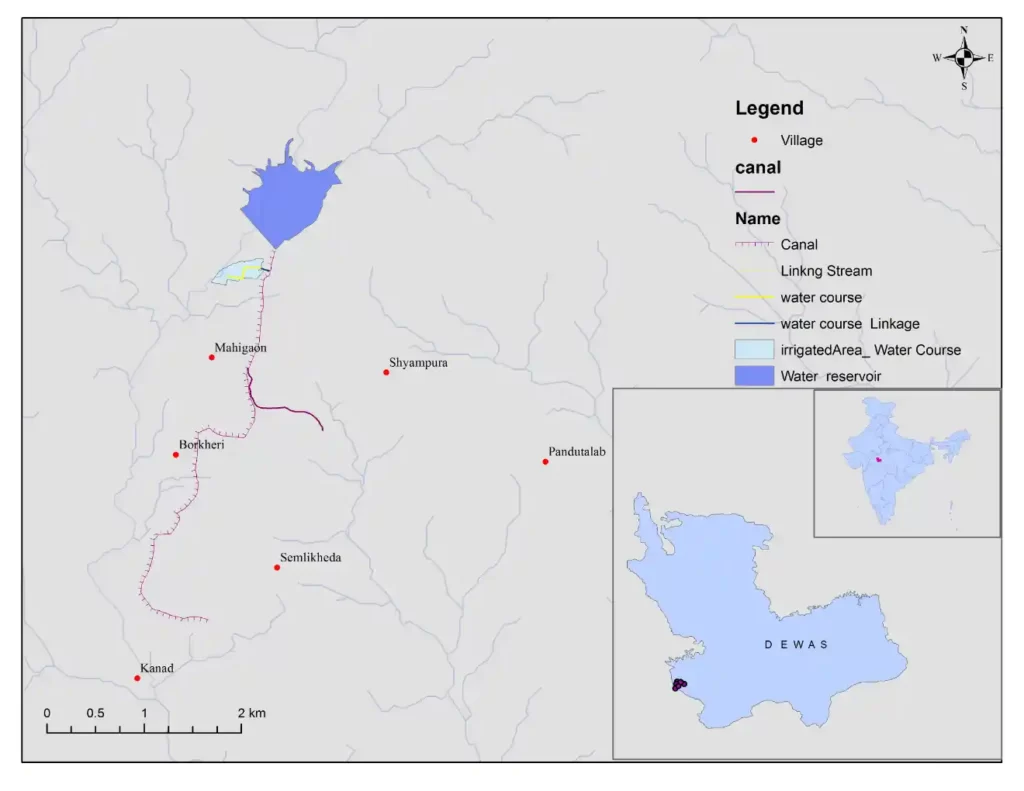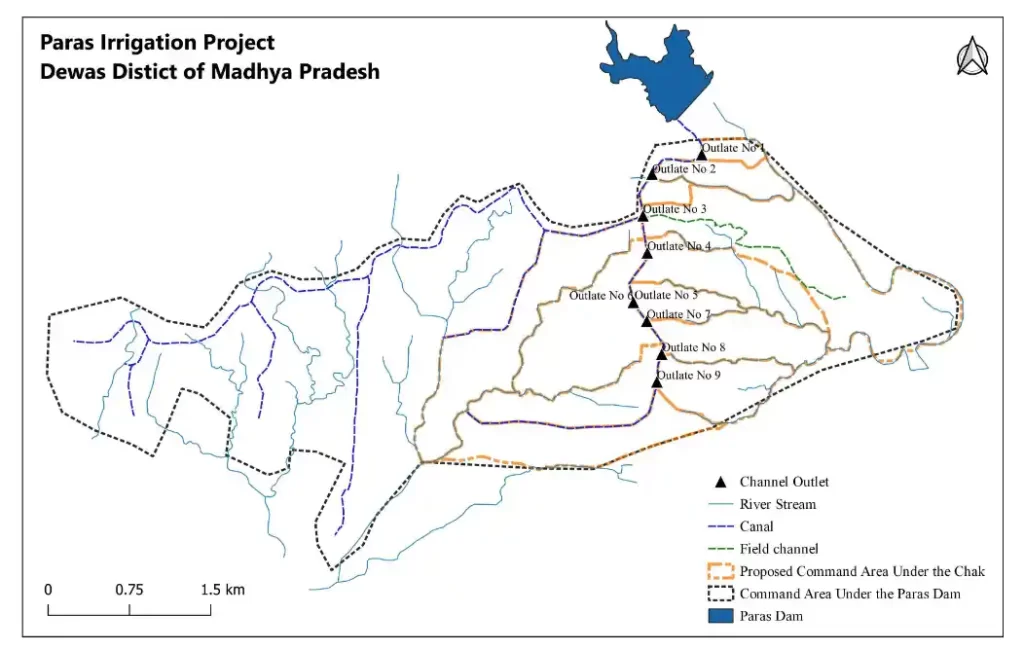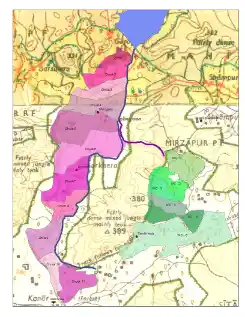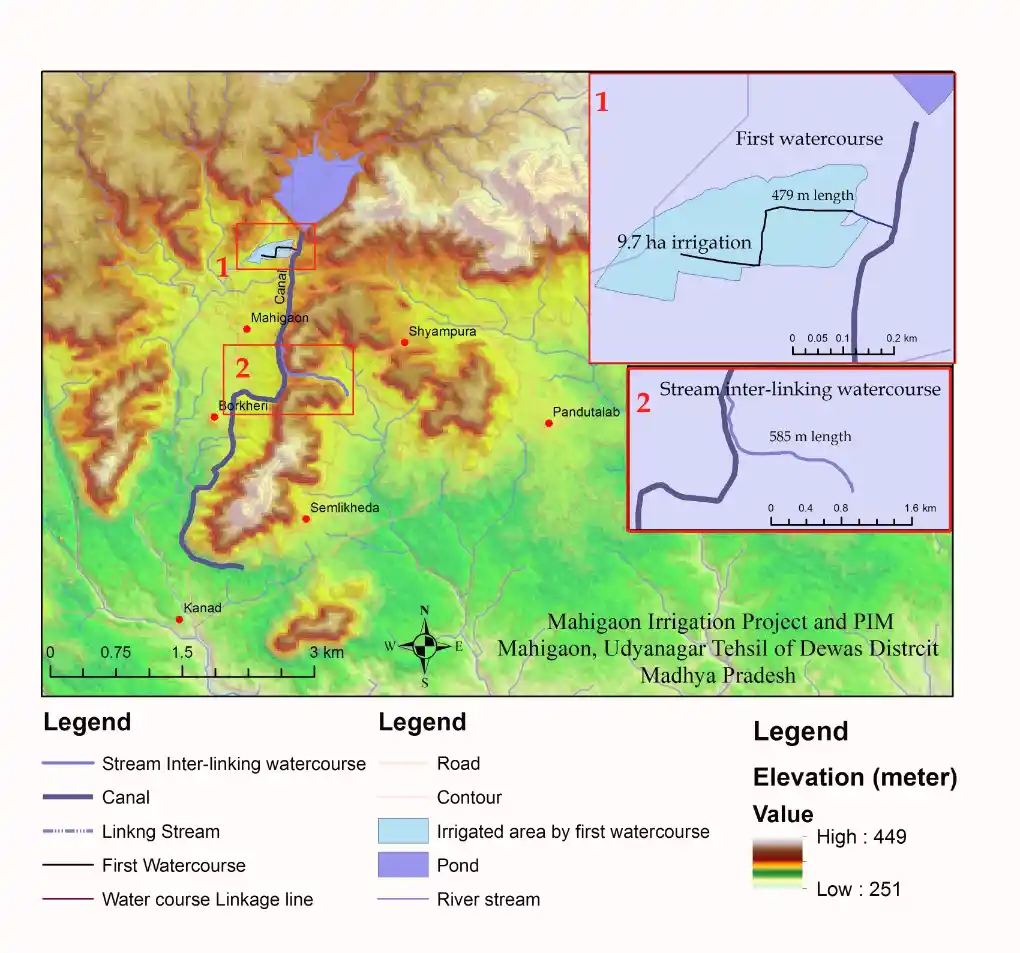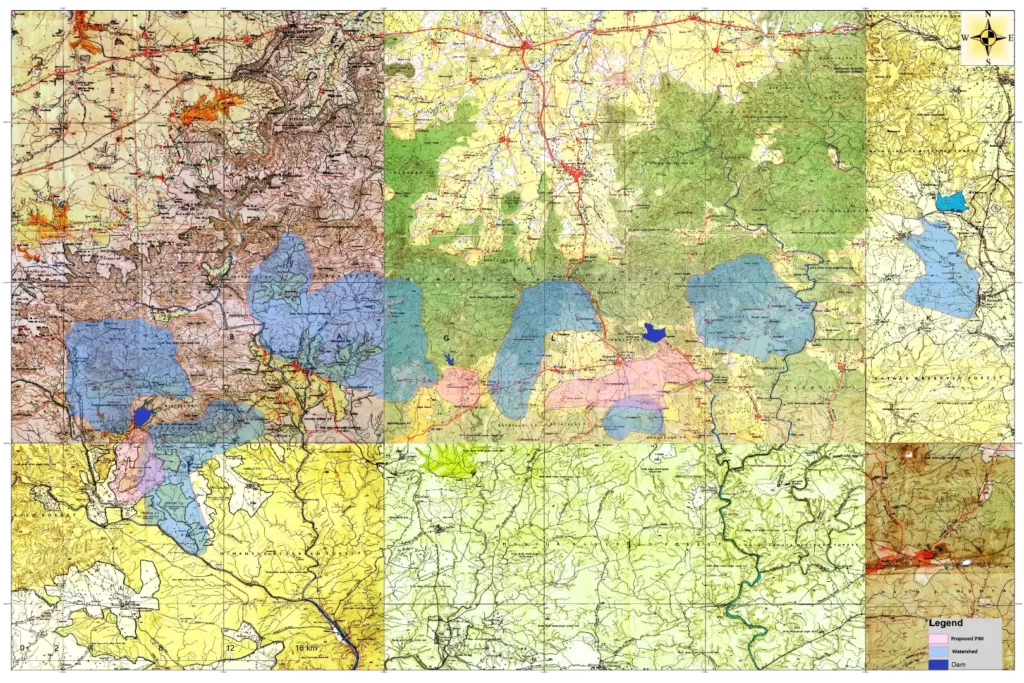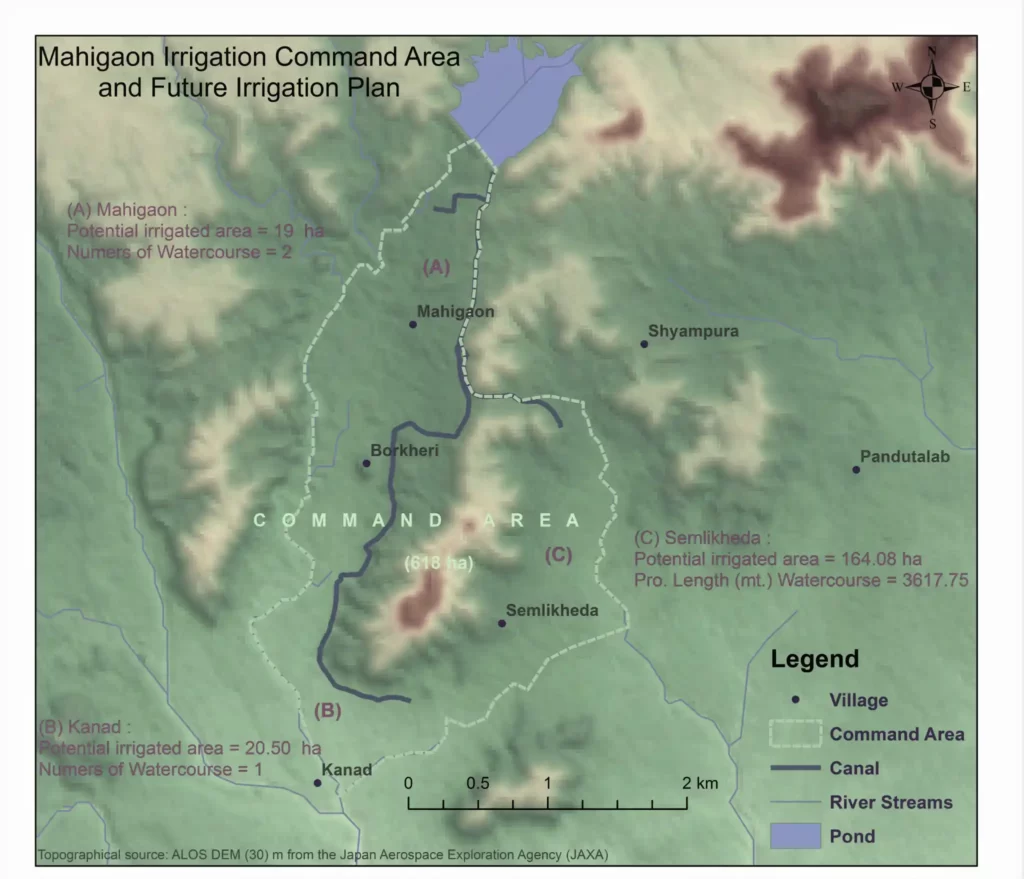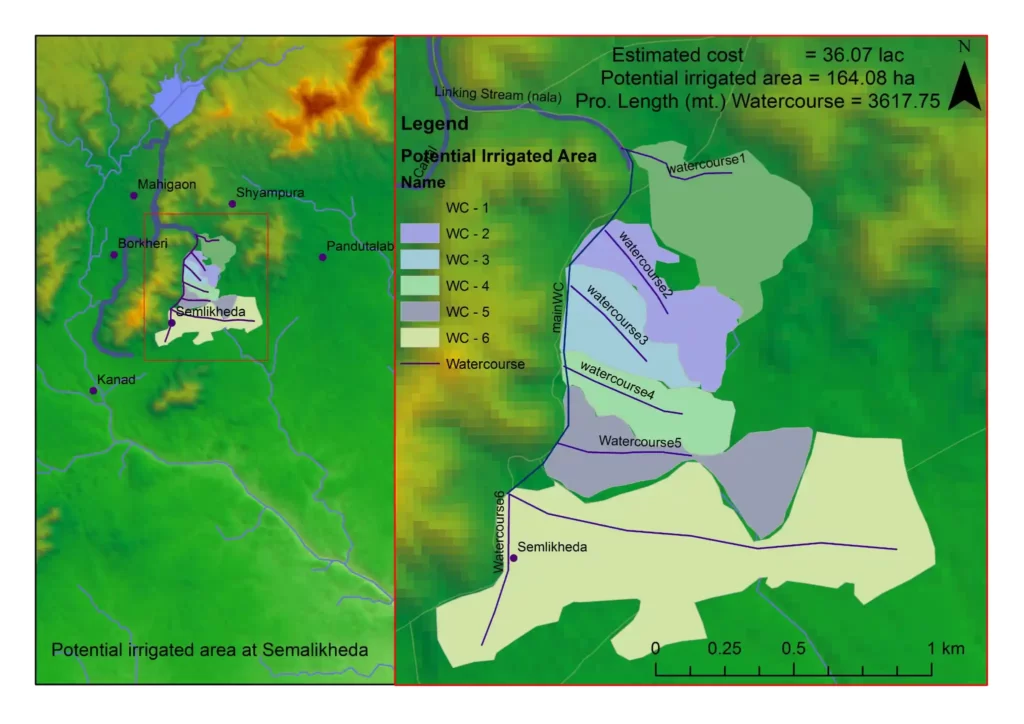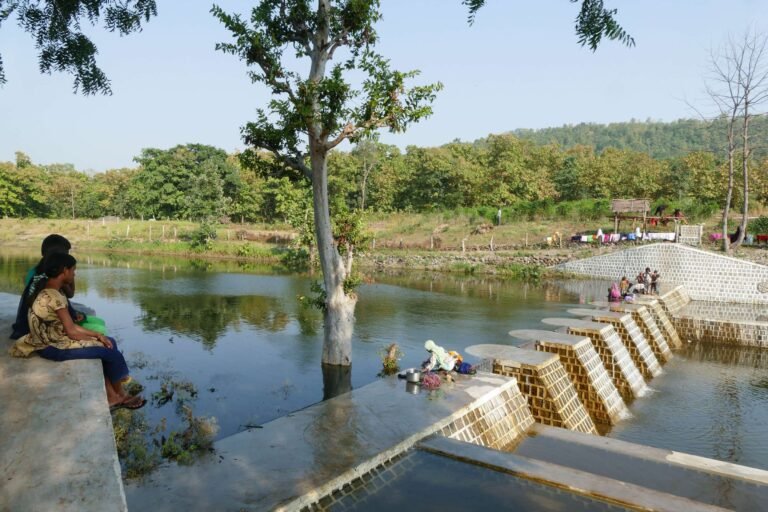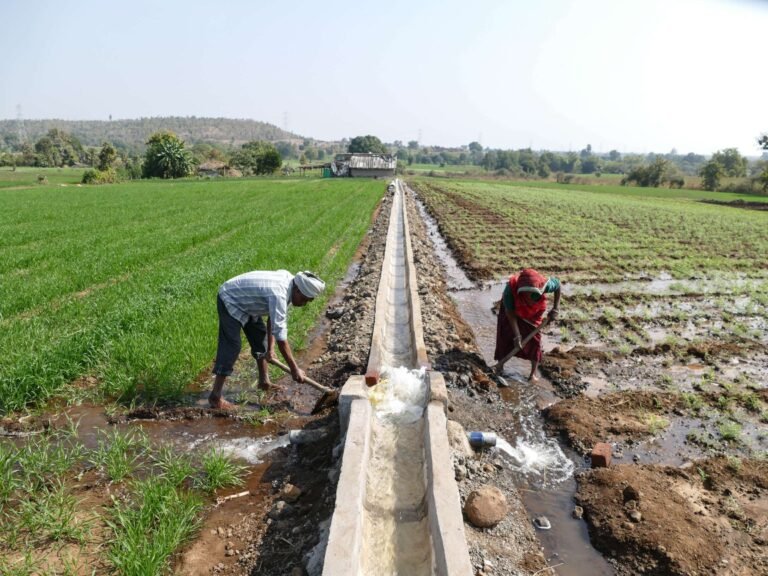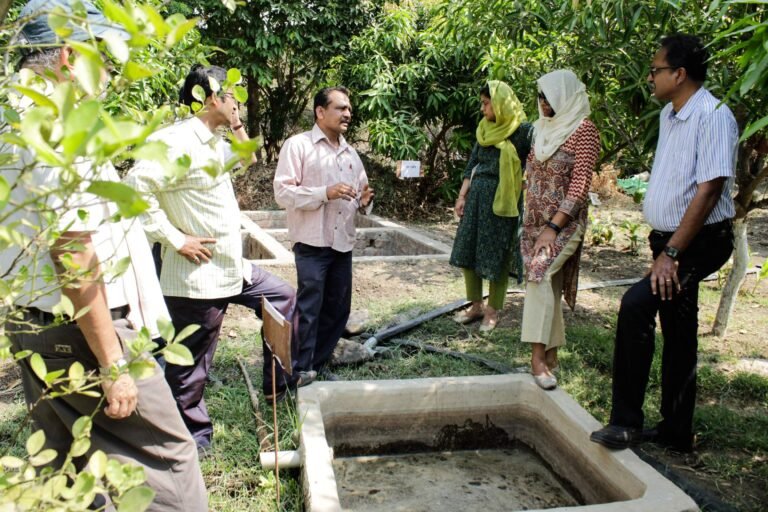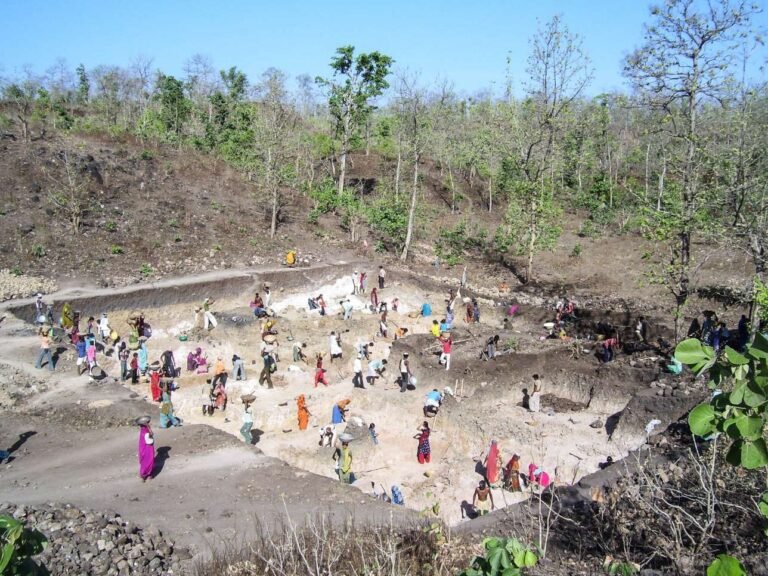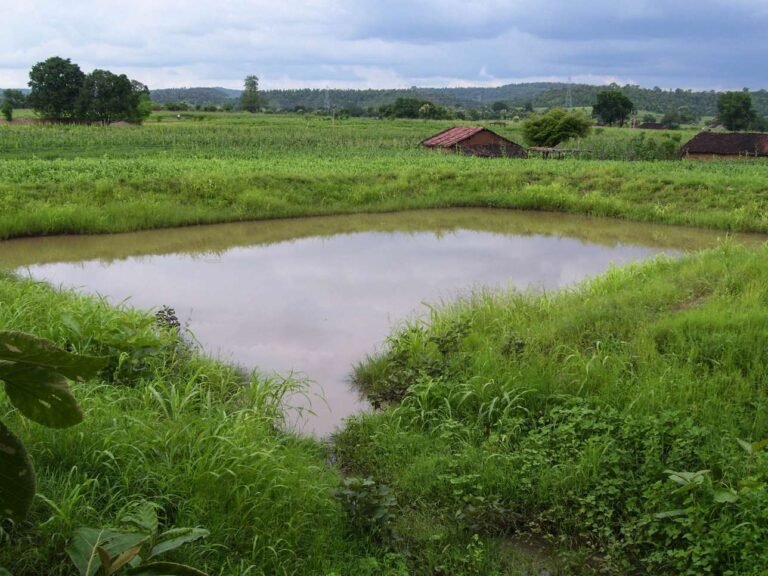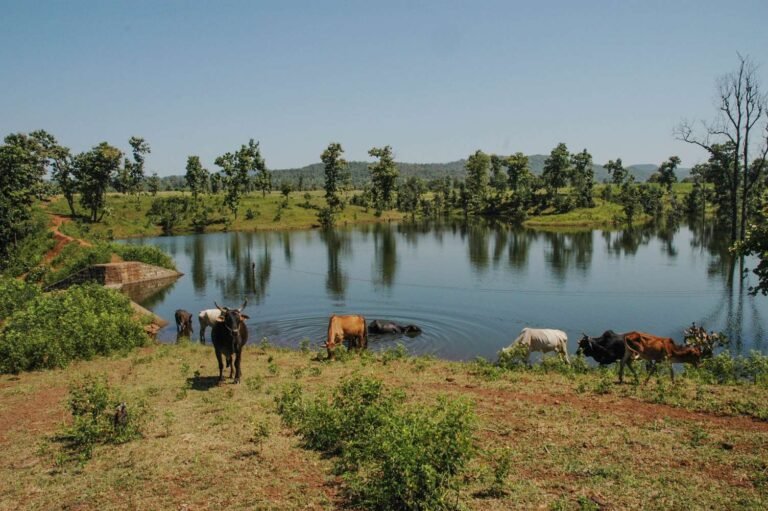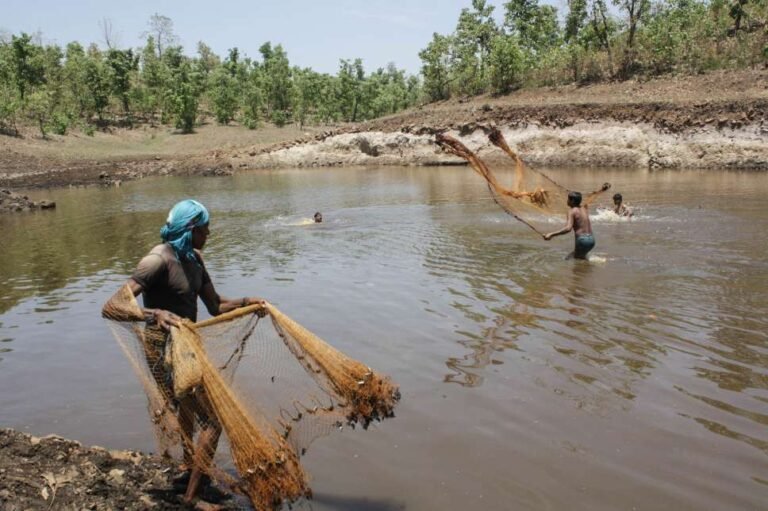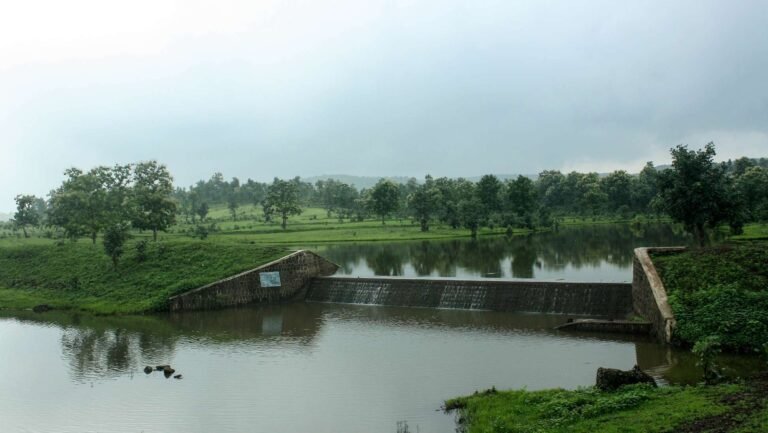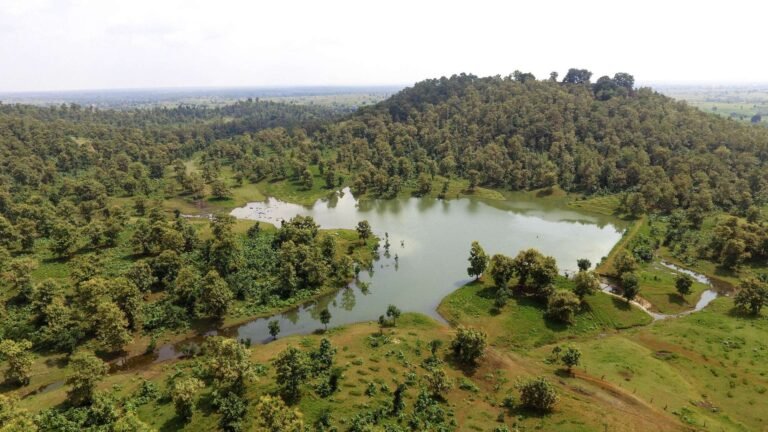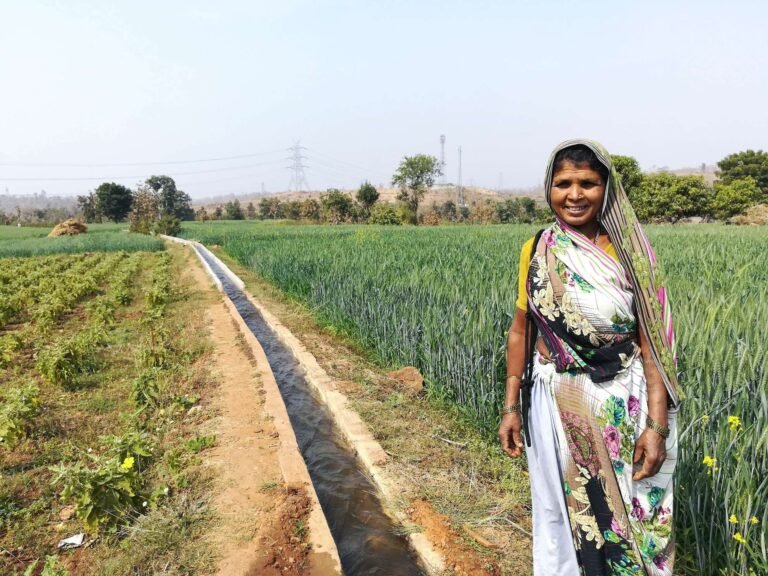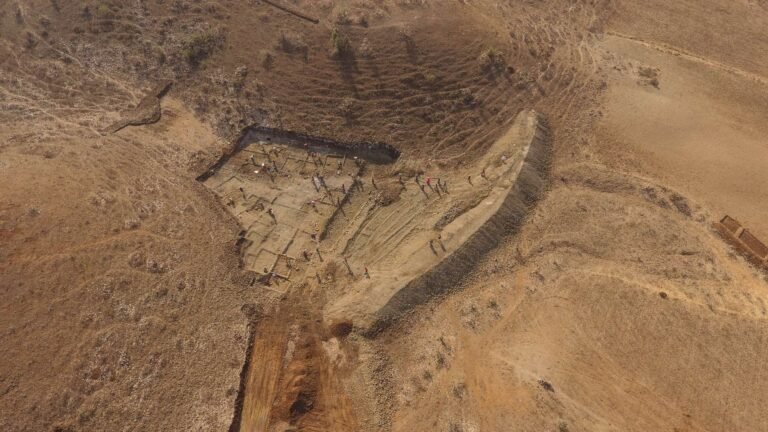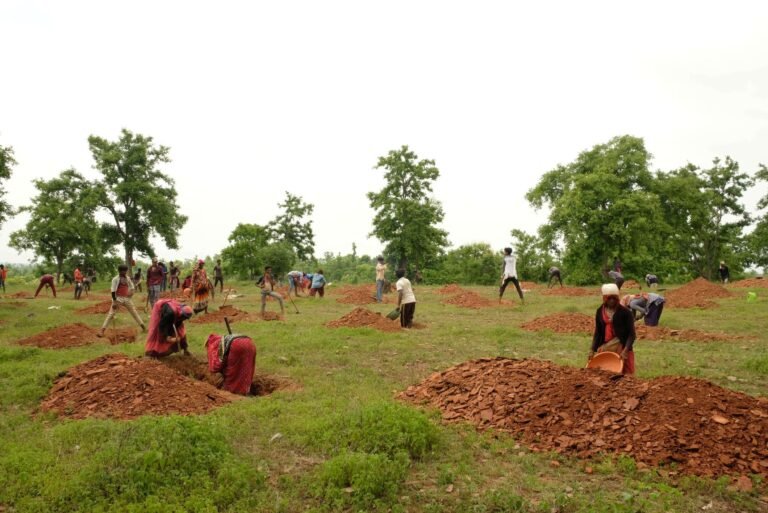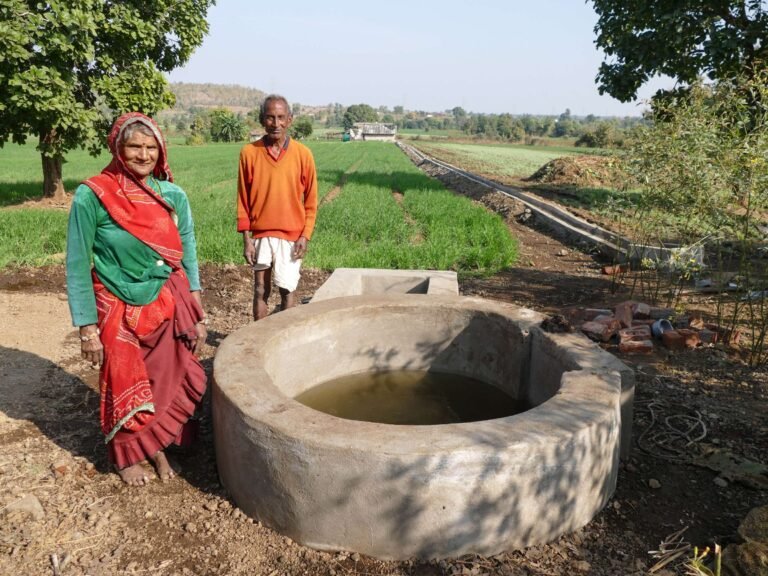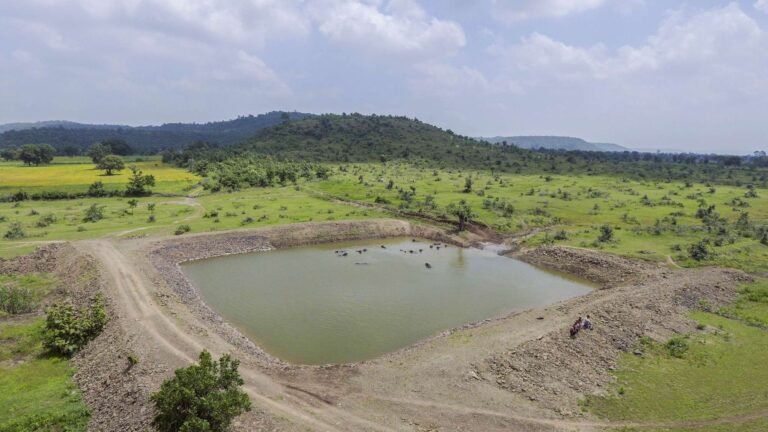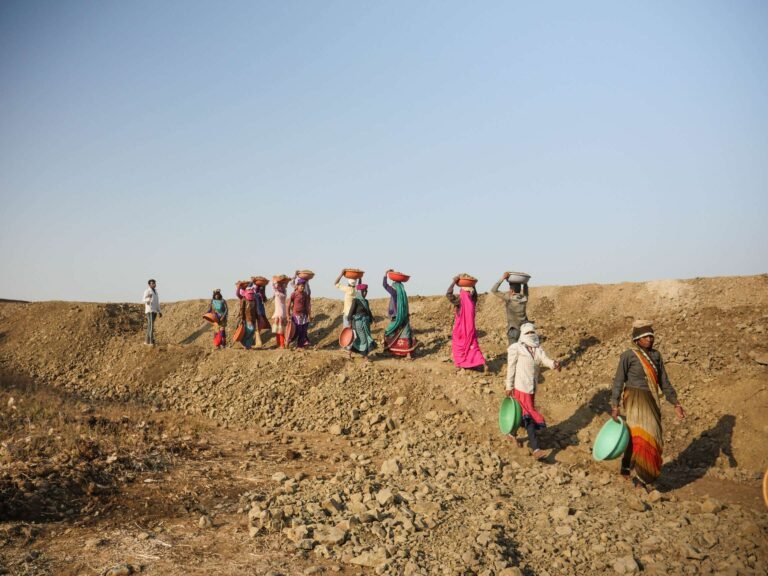Watershed Development
Watershed management is one of the major programmes of SPS. A significant impact of the work has been drought-proofing of the Kharif crop. As in any typical dryland region, rainfall in our area is low, highly erratic, and characterized by long dry spells between rainy days. Water harvesting structures help farmers tide over this crisis by providing crucial life-saving, protective irrigation. We see the watershed programme as a vital public investment to incentivize private investments by even the poorest farmers on their own lands.
The yield of Kharif (mostly rainfed) crops has shown a rise in the range of 10-20% and that of rabi (mostly irrigated) crops has shown a rise of 60-70%. Overall, the value of production of Kharif and rabi crops together has doubled. The Benefit-Cost Ratio ranges from 1.49 to 2.06 and Internal Rate of Return on investments from 30% to 49%. An 80% reduction in distress migration has been observed during the years of ongoing watershed implementation. With a significant expansion in irrigated areas and crop productivity, high labor absorption in agriculture is visible even after the watershed programme closes. It is this “sedimented employment” that reduces external migration from the area in the long run. Hundreds of tribal farmers who have grown a single rainfed crop all their lives are new cultivating 2-3 crops. Many have returned home after years to reclaim the land they had virtually given up for good.

